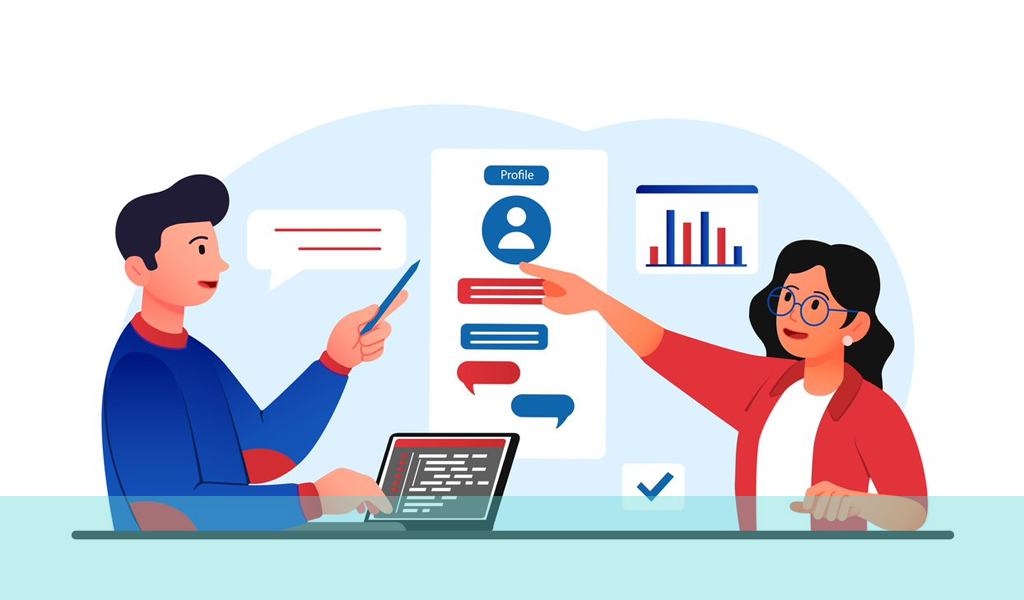
Prospects. Personas. Profits.
Wouldn’t it be wonderful if all your design and delivery solutions could be analysed and summed up in those few simple suggestions?
Admittedly, a wealth of expertise and effort goes into each, yet they create an incredibly valuable roadmap for every business.
1. Prospects
Many designers and entrepreneurs get so invested in their ‘babies’ that they believe their product is something everyone will be interested in and need. But, sadly, unless you’ve got a tool to crack the lottery or a solution that brings about world peace, that’s not the case.
We discuss potential customers consistently in UX research because your users should be central to everything you do. However, there are various levels and types of potential customers, and breaking them into sums of their parts is crucial.
A potential customer might like your product or service, even be fascinated by it, but never be likely to buy it or use it. Interest is only part of the battle—need is essential.
Potential customers include leads, suspects, and prospects, and by narrowing down their key characteristics, we learn more about who they are and can appeal better to what they want. We want the best prospects—the most likely to engage and buy—and we need to know more about who they are and where they can be found in large numbers.
2. Personas
Researching each type of prospect or potential customer uncovers who to target for the most likely reactions, connections, and sales.
Before we’d developed data-driven methods of prospecting—to deliver what users genuinely need—design, invention, and marketing were facilitated by assumptions and guesswork, sending products into the mass market, hoping someone would bite.
Now, by understanding what consumers need and how they act and respond to our products, we pinpoint precisely who they are, how to locate them, and how to make our products irresistible to their demands.
Building customer personas is crucial, and the research they’re built on just as much.
3. Profits
With a clear picture of those ideal customers, you’ll have what you need to match products to demands. If your marketing team is as good as your design and delivery, then profits are set to follow.
But let’s not get ahead of ourselves—just how do you create those valuable customer profiles and personas?
The holy grail of design, delivery, and marketing: how to get potential customers
The quick answer: Give them what they want.
Could it be that easy? The problems with the statement are found in the questions it asks between the lines.
First, the ‘them’ – who are they? And second, the ‘want’ – if you knew what they wanted, you’d have built it for them already.
If you’re looking into why an existing project or product hasn’t met your targets, you should already hold a great deal of information in your sales and marketing data. But if it’s a new idea you’re pursuing or investing in, what facts and figures do you need, and how do you gather them?
As UX researchers, we have the means and methods to narrow down those essential needs with practical and proven strategies, uncovering the answers that maximise your processes and profits. Speaking of needs…
What do your customers need?
Cognitive bias is both a brilliant and terrible thing within human psychology. These automatic thoughts and decisions protect us from accepting everything about ourselves that we’re simply not equipped to face up to. Unfortunately, however, they also lead us off track far too often to keep us feeling safe and in control.
Self-awareness helps us to take off those rose-tinted spectacles and see a more accurate version of what’s happening. But, when it fails—as it frequently does—we need to rely on outside sources and, better still, those with facts and figures that back up the best claims.
The first step is to analyse your product to see who will buy from you, and if you think they will, then why?
Features and benefits – the answer that delivers the questions
People don’t necessarily want to know what your product does. That’s not what moves them to buy. Instead, what drives them is how they feel, and to evoke feelings, you need to solve their problems and show them how much better their life will be.
Those are benefits, and that’s what’s addictive to your users.
Your product’s features will deliver those benefits; they’re what you need to develop to make your project and products irresistible, whether a piece of software, the latest practical tech innovation, accessory, food, supplement, or service.
When you’ve got a list of benefits, you can start matching them to more of the people they’re so irresistible to.

How do your customers’ needs dictate a persona or profile?
You’ve got a clear idea of what your ideal customer wants, but that doesn’t mean you have a clear picture of who they are. For that, you need to explore the things they have in common.
In-house options require you to pitch adverts and content in different areas, monitoring social media, networks, and events for the groups and pages where people are interested in your service. Then, you’ll send out bait to see who bites, demonstrate products to potential customers, ask the people who reject your advances why, and test, test, test until you’ve got the data you think you need.
The most systematic and organised way—and this is where we help—is to engage an established service with proven experts, exploring needs using specifically chosen focus groups and participants to produce the precise data you require.
How to build the pictures that show you what your prospects look like
Creating a clear potential customer definition or persona revolves around common characteristics. We explore the following key areas to pinpoint what they are and build the most likely personas to target.
Markets, segments, demographics, and psychographics
Types of market
- Consumer markets – Individuals buy goods directly to make their lives better.
- Industrial markets – Workers, managers, and businesses that buy products to make selling their product or service easier, more profitable, or more efficient.
- Reseller markets – The middlemen—wholesalers and retailers—who buy and sell products for profit.
With a clear idea of your marketplace, we research and identify potential customers for products or services, narrowed down into potential best prospects.
Segmenting your market
Now we get to the meat in today’s article; the individual elements that make up our ideal customer personas.
Geographics
A specific location or location type narrows the potential customer base for many products. Anybody who operates outside those metrics isn’t your ideal customer and can be disregarded until they become relevant.
You’ve heard the phrase ‘they could sell ice cubes to Eskimos’; that’s what we mean by geographic segmenting. Eskimos don’t need any help keeping things cool, so scratch them off your list. Selling them hi-tech clothing, footwear, and heating systems, however, that would be more like it.
Key demographics of potential customers
Narrowing down ideal prospects requires uncovering attributes they have in common.
In a consumer market, demographics typically include:
- Age and gender
- Profession, employment, income, and position
- Education
- Marital and family status
- Where and how they live (do they own their own home, rent, share, etc.?)
In a business market:
- Business location
- Company size and revenue
- Number of branches/depots and employees
- Industry
- Age of company
Psychographical data of potential customers
Next, we look at the things that make them who they are. Psychographical information uncovers attitudes, beliefs and even the emotions of your targets. If you can learn more about how they feel about status, money, and lifestyle, and how they’d prefer to appear to others, it provides data that helps us to appeal to their dreams and desires or to fill the gaps they feel are their weakest attributes.
In a consumer market:
- Lifestyle
- Attitudes
- Family values
- Outwards appearance
- Hobbies and pastimes
- Entertainment
- Levels of discipline
- Social views
In a business market:
- Business style
- Operational or management style
- Their stage of success
- Views on innovation
- Relationship style
- Responsibility styles and values
- Services and products already used
Behavioural analysis of potential customers
Monitoring and analysing user behaviour uncovers the rate and reasons users engage and buy products. Understanding what drives their decision-making shows us how to hone in on those habits, nudging them past the winning post without them realising you’re doing it.
- Why they buy
- How often they buy
- How much they buy
- Precisely when they buy
- The time it takes to reach their decision and the factors that affect that
- Where they buy
- Where they use your product or service
So, with all that in the bank, who are my potential customers?
Combining your newly uncovered information into a persona you can use is work for an expert analyst. There will undoubtedly be standout factors you can use from the outset, identifying potential customers for the business’s products or services. But to build a picture of your top prospects takes the detailed organisation of the data you’ve uncovered. However, when it’s all systematically compiled, you’ll know precisely who to target and how to communicate with them, drawing them in and using what you know they’ll be most attracted to.
Conclusion
An accurate picture painted by custom-acquired data is key to building the products people want and need. In turn, helping entrepreneurs and innovators build the products that will ensure the sales and profits they strive to achieve.
Seeing your potential customers for this product or service as real people takes the guesswork out of design and marketing, whether with new projects or upgrading existing products.
If you are struggling to generate a clear profile of your potential customers, email us at hello@ux247.com.







